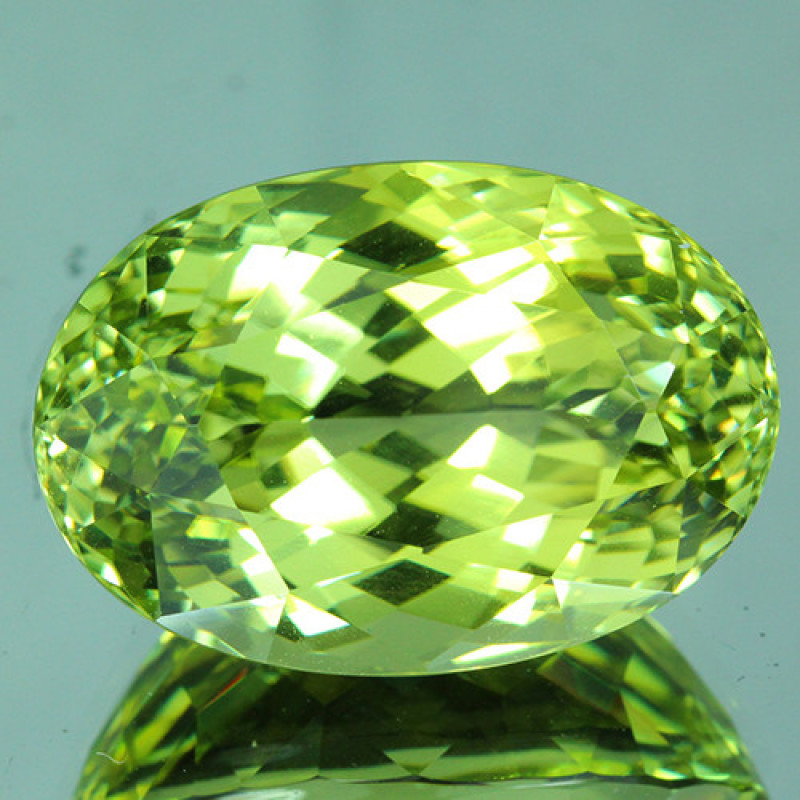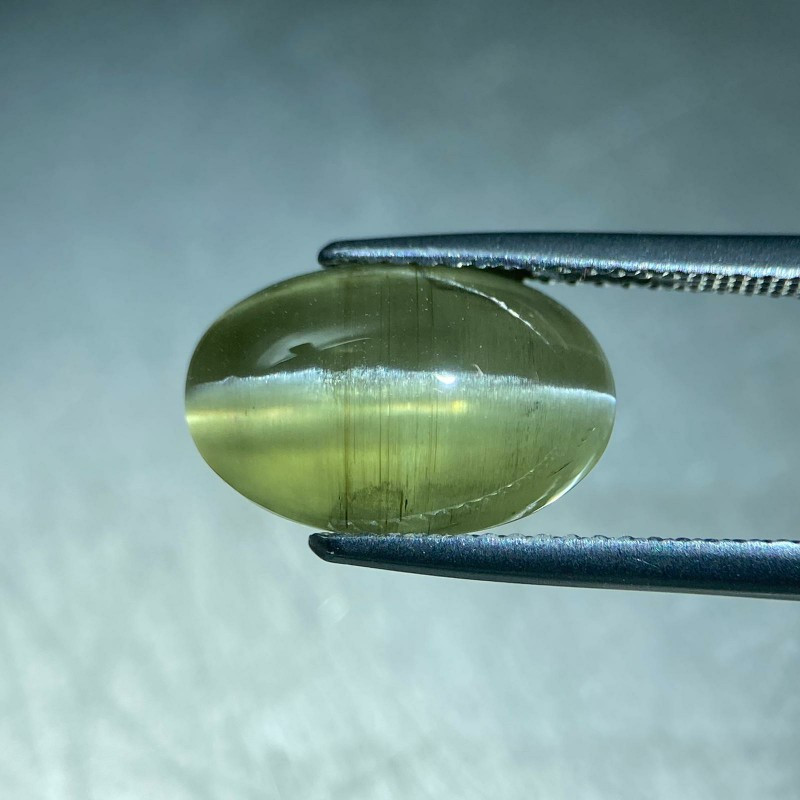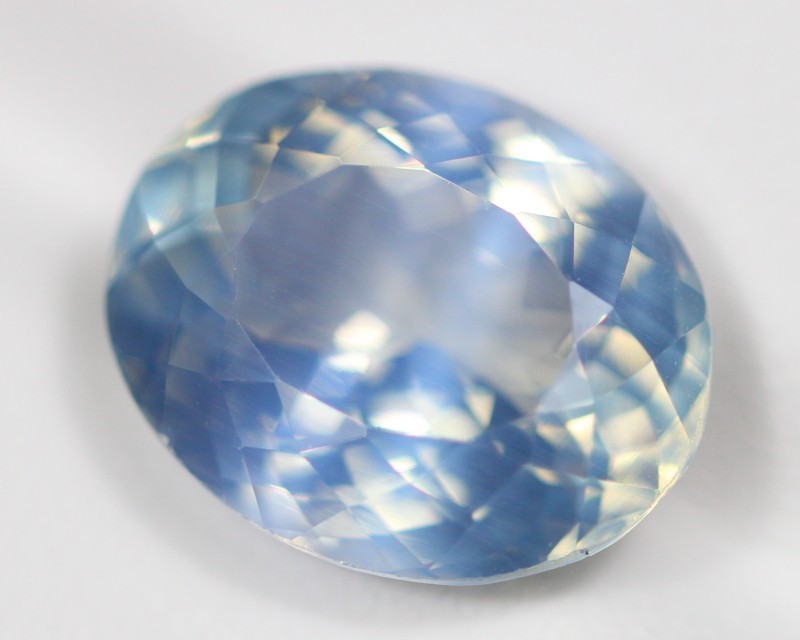
Sillimanite Gem: Info on Properties, Meanings & Prices
 Sillimanite is an aluminosilicate commonly sold in two forms: cat’s eye stones or faceted white, yellow, or green gemstones. Both forms come in various colors.
Sillimanite is an aluminosilicate commonly sold in two forms: cat’s eye stones or faceted white, yellow, or green gemstones. Both forms come in various colors.
While beautiful, sillimanite is also rare and difficult to cut, so it’s more well-known among collectors and jewelers. Along with the other minerals in the group (kyanite and andalusite), sillimanite is the rarest, making it a special piece in any display.
As of 1977, sillimanite serves as the official state mineral of Delaware, USA. Despite its rarity, sillimanite can be incredibly durable, making it great for everyday wear.
Before you shop for sillimanite, check out this guide to learn all of sillimanite’s properties, value factors, prices, meanings, and more!

What Is A Sillimanite Gemstone?
Sillimanite is a glassy or silky semi-precious gemstone with a few historical names, including fibrolite, monrolite, bamlite, and bucholzite. Though its gemstone forms are gorgeous, 95 percent of sillimanite uses are industrial.
What is sillimanite used for? The primary industrial use is for manufacturing refractory material like glass and ceramics. It’s also used for making metals and cement, along with smelting iron and steel.
Throughout its history, sillimanite has also been used for creating tools from other materials. Some other products and uses for sillimanite include:
Porcelain
Industrial-strength glass
Alumina bricks
Gemstone-wise, sillimanite serves as an alternative May birthstone. Cat’s eye sillimanite is also a planetary star stone for the moon.
Sillimanite Specifications & Characteristics
Sillimanite’s mineral group also includes kyanite and andalusite. They’re all polymorphs (same composition, different crystal structure) with each other, though their appearances and formation conditions are distinct.
This mineral is an aluminosilicate. Depending on the source, the chemical formula for sillimanite’s composition may be written Al2SiO5, Al2SiO3, or Al2(SiO4)O. Iron and titanium are common impurities.
The two general forms for sillimanite, raw, are fibrous or crystalline. Sillimanite can form compact or fibrous masses. Its crystals are prismatic and slender, but rarer than fibrous material.
Here are the remaining sillimanite properties:
Mohs hardness: 6.5-7.5
Color: Colorless, white, gray, yellow, brown, green, blue, violet-blue
Crystal structure: Orthorhombic
Luster: Vitreous (glassy), sub-vitreous, greasy, or silky
Transparency: Transparent to opaque
Refractive index: 1.65-1.68
Density: 3.23-3.27 - crystals; 3.14-3.18 - compact
Cleavage: Perfect, 1-direction on [010]
Fracture: Irregular/Uneven
Streak: White
Luminescence: Fluorescence in blue Myanmar stones - red in SW-UV & LW-UV
Pleochroism: Sometimes present & strong in chatoyant material and blue or green stones; Chatoyant stones - light yellow, gray-brown, clove-brown; Blue stones - colorless, blue, and light yellow; Green stones - Dark green, yellow-green, blue
Optical effects: Rarely chatoyancy

Types of Sillimanite
The only variety of sillimanite is fibrolite, or sillimanite cat’s eye. But what is a sillimanite cat’s eye?
Fibrolite (a.k.a. cat’s eye sillimanite or chatoyant sillimanite) is a fibrous sillimanite variety, hence the name. It displays chatoyancy (the “cat’s eye” effect), meaning parallel bunches of fibers align to reflect a ray of light down the stone’s center, resembling a cat’s eye. These stones can be transparent to opaque.
A sillimanite cat’s eye gemstone almost always has a silver reflected light, but the body color differs. Reddish-black, dark brown, or grayish-green are most common, but it can also be:
Red
Yellow
Brownish-orange
Tan
Black
Blue (deep, light, or grayish)
Recently, rare violet-blue specimens from Sri Lanka and Myanmar have appeared on the market.

Sillimanite Gemstone Meaning & History
Sillimanite symbolizes happiness, success, and inner peace. It’s also believed to represent willpower and wisdom, especially for encouraging strong leadership traits.
Cat’s eye sillimanite’s meaning is associated with past-life exploration and foresight. These gems represent the journey of past, present, and future. They were historically believed to protect the wearer.
History
The earliest evidence of sillimanite dates back to prehistoric times. Neolithic compact sillimanite fashioned into polished blades, similar to those made from nephrite jade, were uncovered underwater near France in 2010. Additionally, Native Americans have used sillimanite to make tools for a long time.
Sillimanite’s first name was Faserkeisel (German for “Fiber silica”), given by Austrian chemist Joseph Lindacker in 1792 for specimens found in Bohemia (present-day Czechia).
In 1802, French mineralogist Jacques-Louis, Comte de Bournon named fibrous sillimanite material from southern India (the Carnatic region) fibrolite.
The third name given to sillimanite was bucholzite, chosen by German scientist Dr. Rudolph Brandes when he described the mineral in 1819. The name honored Brandes’ mentor, renowned German chemist Christian Friedrich Bucholz.
The specimens Brandes described came from the Tyrolese Alps. However, the description was limited, describing the mineral as grayish-white with a slight yellow undertone.
In 1824, American scientist George Thomas Bowen studied specimens from Connecticut, USA, and gave sillimanite its current name to honor American geologist and chemist Benjamin Silliman, Sr. Silliman was also the first professor at Yale University to educate on mineralogy.
Despite its many names and descriptions, sillimanite remained widely unknown — that is, until the 1990s, when a relatively abundant deposit was discovered in Orissa, India.

Sillimanite Healing Properties
Crystals like sillimanite can possess certain abilities as healing stones. White sillimanite can offer cleansing and spiritual awareness, like other white stones. On the other hand, green sillimanite shares green gemstone benefits like optimism and growth.
What other physical and emotional benefits does sillimanite have in store?
Physical Healing
Physically, cat’s eye sillimanite is believed to help treat eye-related issues. Sillimanite itself is said to help with:
Heart issues (e.g. hemorrhages, blood circulation)
Digestive problems
Lung issues (e.g. allergies, asthma)
Aging
Endorphin production
Emotional Healing
The endorphin production mentioned above plays into sillimanite’s reputation as a happiness stone. Its properties are especially helpful if you feel despondent or “in a rut,” as it’s said to ease frustration and help you find what excites you again.
Additionally, sillimanite crystals are popularly used for facilitating easier decision-making, clearing negativity, and harmonizing emotions.
Chakra Healing
Chakra healing involves resolving negative symptoms associated with a blocked chakra, or energy center. Crystals are often used for specific chakras based on their coloring.
As a chakra stone, sillimanite can open any of the chakras (energy centers), but it’s especially helpful for balancing the heart chakra — bringing in love and acceptance. Meanwhile, black or brown fibrolite opens the root chakra for restored security and emotional connection.
Next, let’s discuss sillimanite’s value factors!

Sillimanite Gemstone Properties
Experts determine the objective value of sillimanite gemstones based on their color, cut, clarity, transparency, and carat weight.
Color
Transparent to translucent sillimanite crystals can be colorless, white, yellow, green, or blue. Fibrolite (cat’s eye sillimanite) can be gray, brown, purple, blue, or yellow, along with the tones mentioned in the previous Types of Sillimanite section.
Pure sillimanite is colorless, so other hues usually come from impurities or inclusions. Blue or violet hues occur through a charge transfer from iron to titanium. Yellow and green hues come from iron or chromium, and brown coloring also comes from iron.
Stones with rare hues (like violet-blue, blue, or colorless) and medium to high saturation command the highest prices.
Cut
Many gemstones present difficulties for cutting, but sillimanite’s perfect cleavage and brittle tenacity (in crystal form) make it among the trickiest gems to facet.
Skilled gem cutters who take on the challenge often choose oval, cushion, or fancy faceted cuts. The end result is a rare and valuable treasure.
Compact sillimanite is often unfaceted. Cat’s eye stones must be cut as cabochons, but other material may become beads or carvings.
Clarity & Transparency
Andalusite stones generally have a Type II colored gemstone clarity grade, meaning some visible inclusions are expected. In most sillimanite gems, inclusions like needle-like crystals will lower the value. One exception is cat’s eye sillimanite.
Cat’s eye sillimanite gets its chatoyancy from parallel ilmenite, hypersthene or rutile inclusions. When ilmenite is responsible, the fibrolite stones are usually blackish.
Most sillimanite crystals are translucent. Transparent sillimanite is rare and thus, more valuable. Most cat’s eye stones are opaque, so the rare translucent ones are also more valuable.
Carat Weight
Faceted sillimanite gemstones aren’t only rare, but also typically under 5 carats. Cat’s eye stones can generally reach 10 carats, though the largest example is 35 carats.
Size may also depend on the source. Myanmar and Kenya produce sillimanite of similar quality, but Kenya’s stones are slightly smaller.

Sillimanite Formation & Sources
Like kyanite and andalusite, sillimanite forms as a secondary mineral inside sedimentary rocks undergoing metamorphosis via heat and pressure. These conditions alter both the rock and minerals inside, creating new minerals like sillimanite.
Which of the three stones will form depends on the heat and pressure levels. Sillimanite requires high temperatures, while kyanite requires high pressure. Andalusite forms under low pressure and temperatures.
What type of rock is sillimanite found in? It’s usually found in high-grade metamorphic rocks like schists, gneiss, granites, or aluminum-rich pelites.
With that in mind, where is sillimanite found?
Mining Locations
The best sources for sillimanite are Myanmar, Sri Lanka, and Kenya. Myanmar is known for its cat’s eye sillimanite (or “Burmese fibrolite”), while Sri Lanka produces cat’s eye sillimanite with grayish-green coloring.
Both Sri Lanka and Myanmar are renowned for their green, blue, or violet-blue facetable crystals. Kenya produces light blue or colorless facetable crystals with similar quality to Myanmar’s stones, but generally smaller.
Fascinatingly, some of the largest sillimanite crystals have been found in Antarctica!
Other sillimanite sources include:
Australia
Austria
Brazil
Canada
China
Czechia
France
Germany
India
Italy
Madagascar
Norway
Slovakia
South Africa
Sweden
Tanzania
UK (Ireland & Scotland)
USA (notably Delaware, Idaho & Connecticut)
Of course, you’ll want to know what prices to expect, right?

Sillimanite Gemstone Price & Value
Because sillimanite is not only rare but notoriously difficult to cut, its price reflects these factors in faceted gems and cabochons. However, sillimanite is still significantly less expensive than other popular gems.
Faceted sillimanite gemstones at wholesale are generally $18-$95 per carat, though transparent gems with bright green coloring and good clarity can be $200-$400 per carat.
The sillimanite price per carat for cat’s eye cabochons ranges from $4-$11 per carat for more common, darker colors. Rarer colors like white, golden-brown, deep red, or orange fetch $12-$25 per carat.
Rings are the most popular sillimanite jewelry item, particularly cabochon rings. Their price ranges significantly based on the metal settings and other gems incorporated, along with if they’re antique or not.
Antique sillimanite cabochon rings with gold settings range from $550 to around $2,300. Cabochon rings with sterling silver settings range from around $40-$200. Faceted sillimanite rings are typically $25-$100, but some with gold settings and a large gem can fetch beyond $4,000.
Pendants are more affordable, with raw green crystal pendants costing around $30 and other styles fetching $5-$50. Beaded strands are $8-$10, though coated bead strands are $30-$60.
Sillimanite Care and Maintenance
Though sillimanite’s hardness is good, its cleavage and toughness make proper gemstone care essential for preventing breakage. Cabochons are more durable, but faceted sillimanite jewelry should have protective settings.
Avoid wearing the stone during intense activities, including sports, gardening, and cleaning. Also keep sillimanite away from harsh chemicals.
Instead, keep it clean with soapy water and a soft, microfiber cloth followed by rinsing. Then, store it in a fabric-lined jewelry box or pouch away from other gems.

Setting Your Sights on Sillimanite?
The typical yellow hue in faceted sillimanite gems reflects this stone’s reputation as a “feel good” crystal for boosting happiness and setting your sights toward the future.
But sillimanite’s style isn’t limited — you can find stones perfect for earthy boho styles or sophisticated cosmopolitan looks. Plus, because it’s largely unknown, you’re likely to stand out from the crowd!
Search the Gemstone Encyclopedia
Related Auctions
Related Articles
Everyone has a gemstone that corresponds with their star sign. These are also known as your Star Stone. Learn more about these stones and find out what your Star Stone is.
10th May 2018
Originally the Birthstones or gemstones were associated with a zodiac sign or the month of a individuals birth. Find out what your stone is and view the stones we have for sale
8th Feb 2021
There are so many tools on the market for testing a gemstone, but what are the main tools required for simple analysis. Lets look at four tools for gemstone testing.
4th Mar 2020
Latest Articles
Yugawaralite is a rare colorless, white, or pinkish zeolite crystal named for its discovery in Yugawara, Japan. Here we uncover the multifaceted history, properties, prices, and uses of yugawaralite.
24th Mar 2025
Simpsonite is a lesser-known mineral known on the gem market for its durability, yellow-orange color, and rarity. Discover all the properties, uses, prices, and history of simpsonite.
3rd Mar 2025
Kurnakovite is a colorless crystal related to inderite and rarely faceted but known among collectors. Explore the mineral traits, history, prices, and more in this kurnakovite guide.
17th Feb 2025
Article Categories
How To's is where you will find helpful articles from gem Rock Auctions on how to cut gemstones, select gemstones and buy gemstones.
9 Articles





